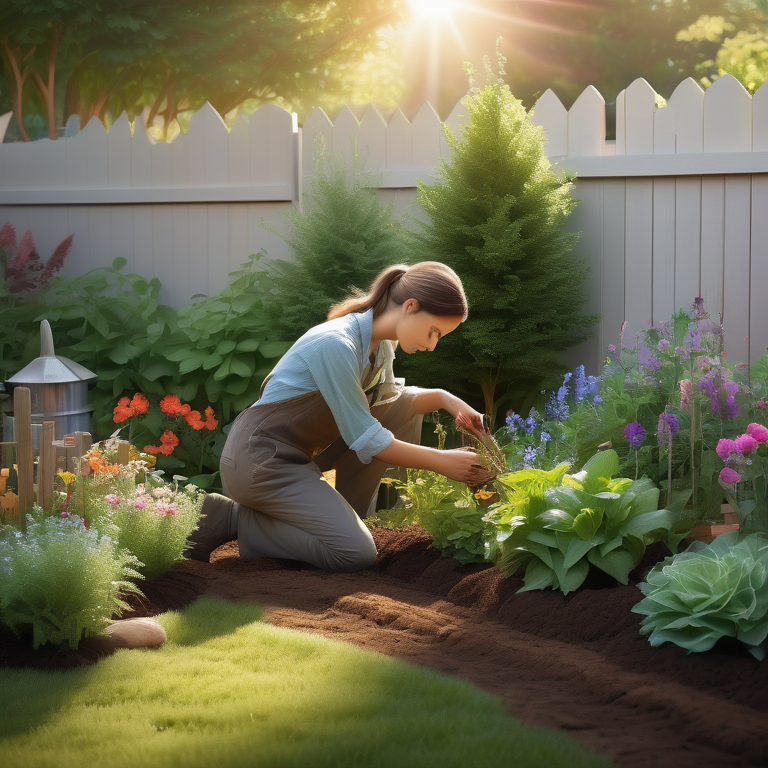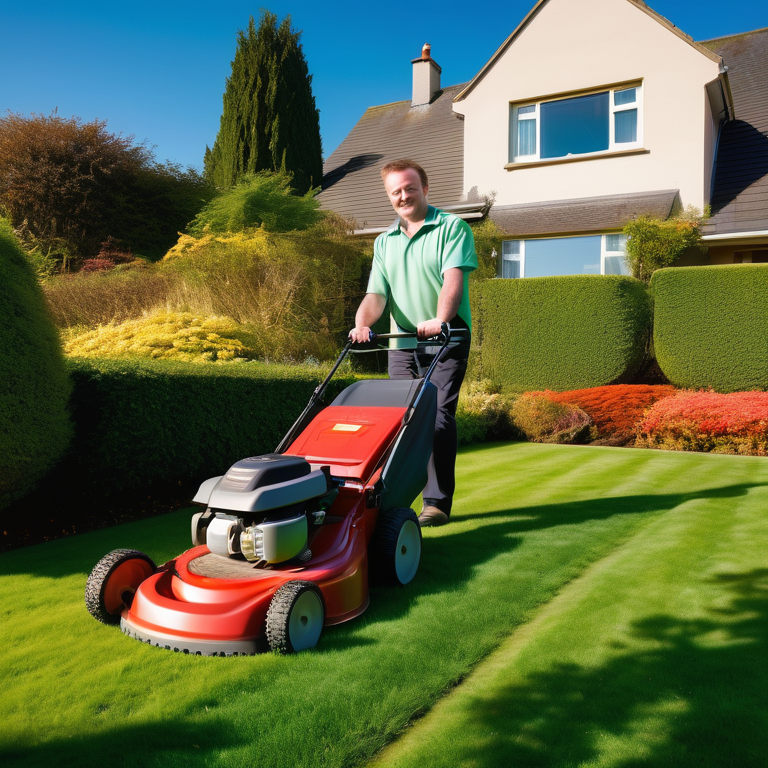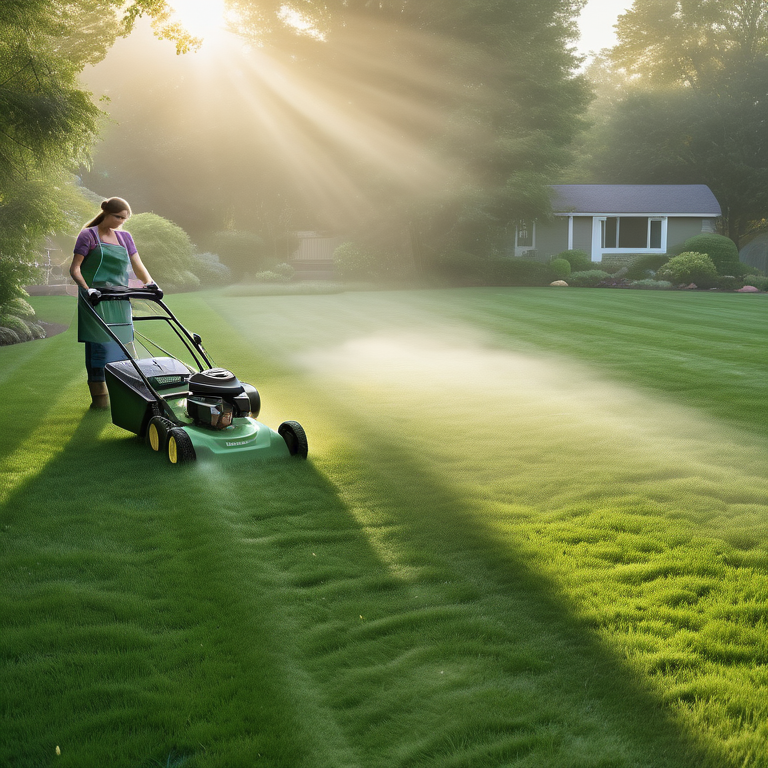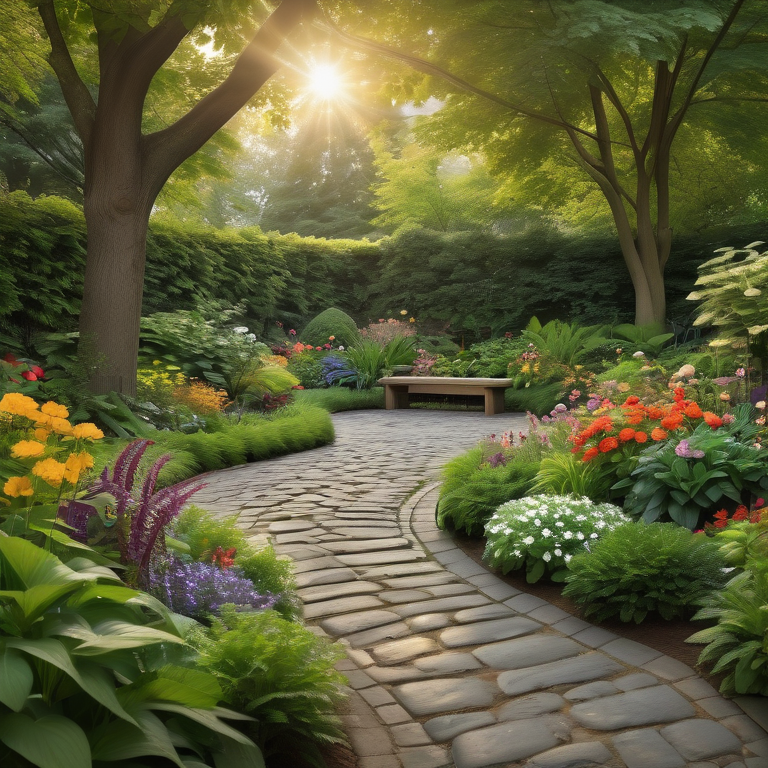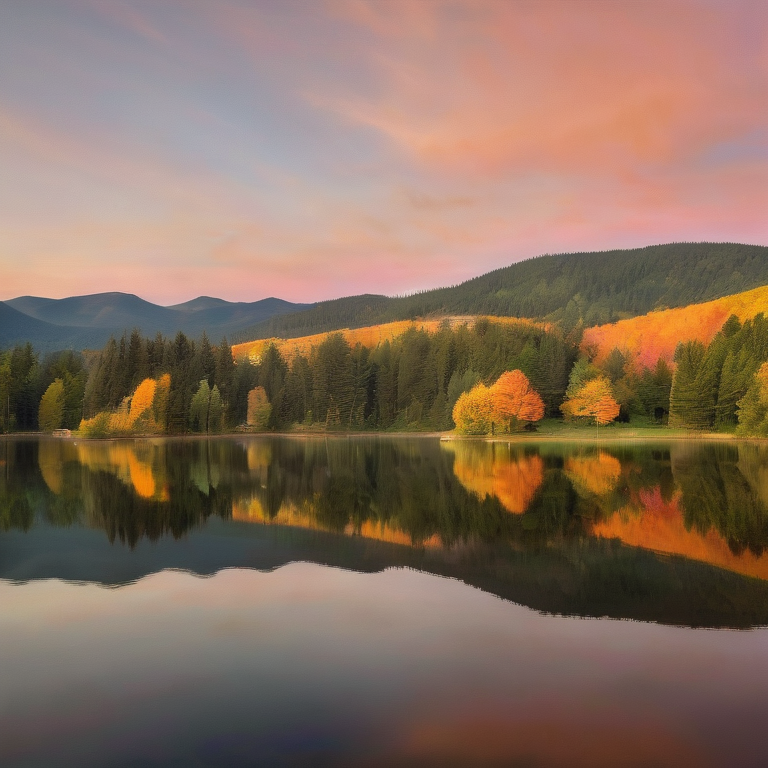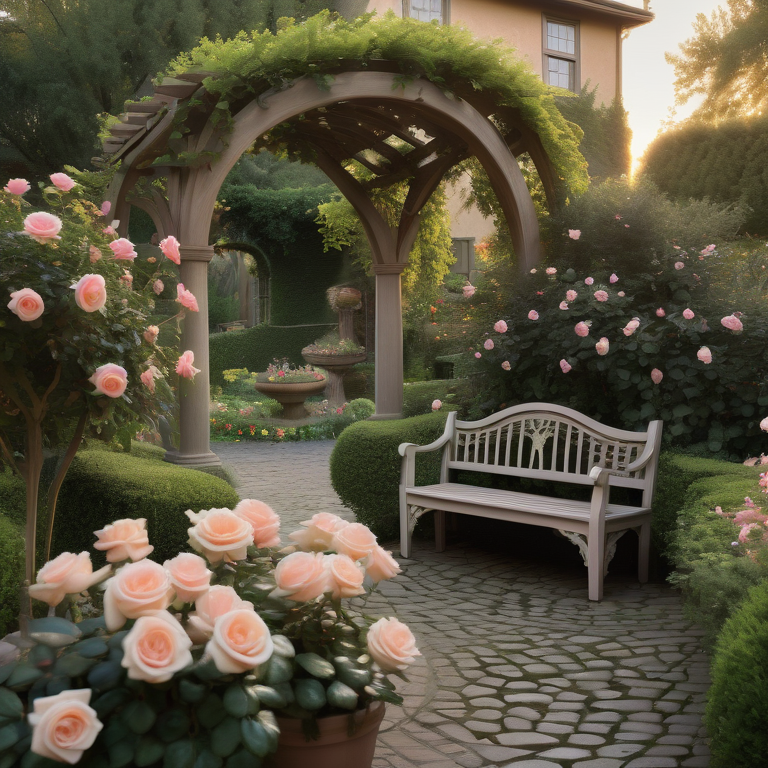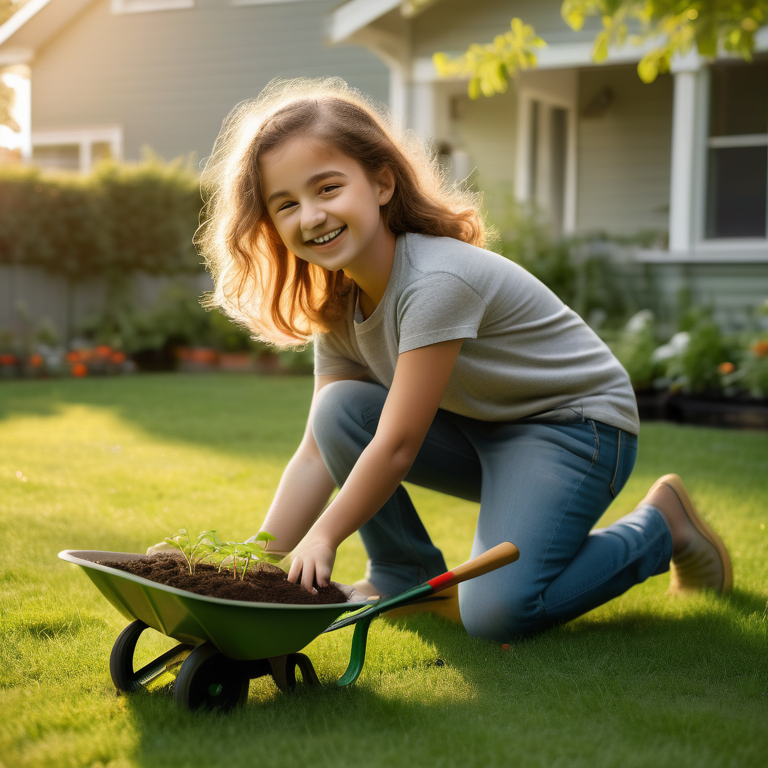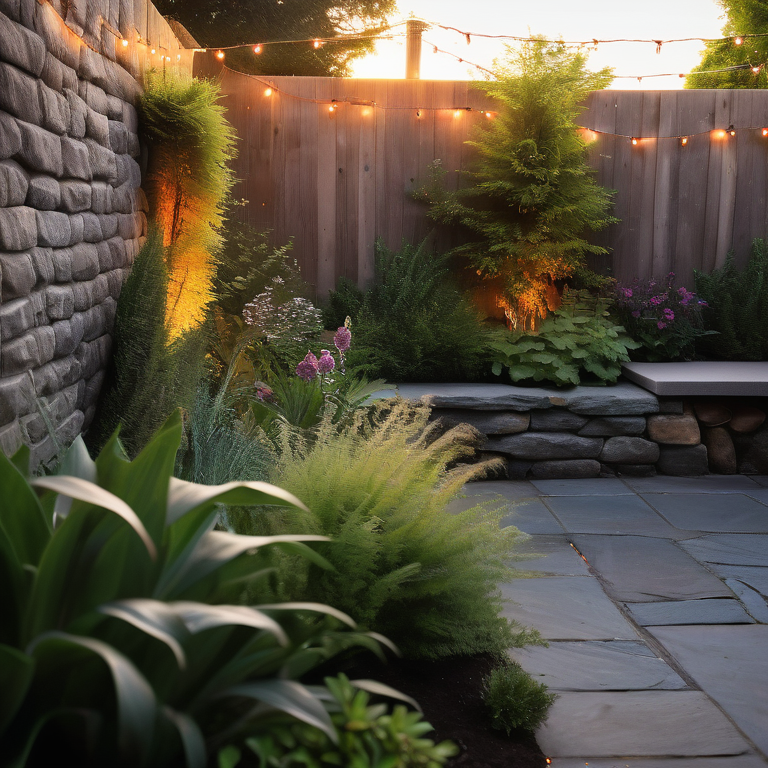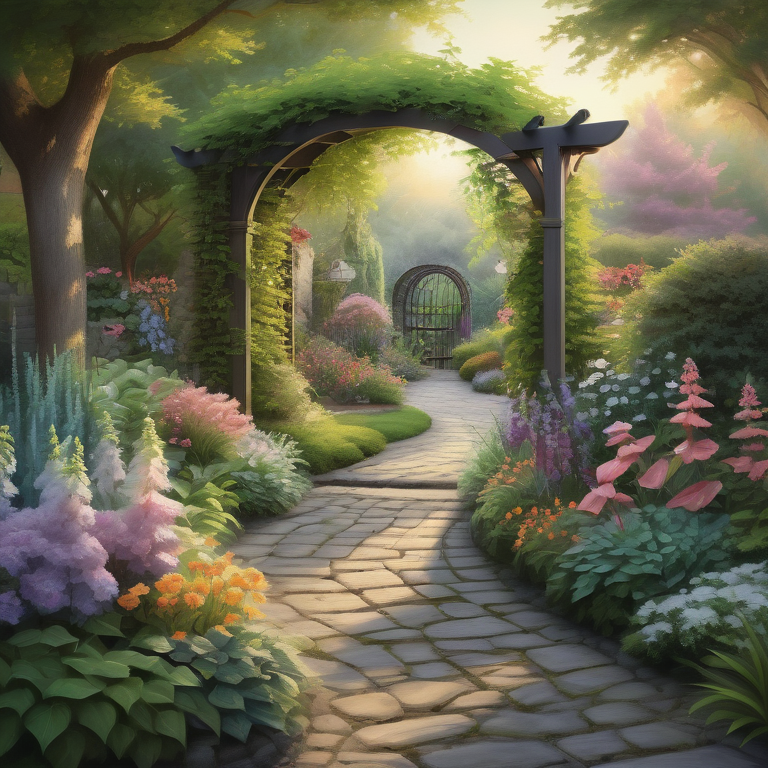Key Highlights
- Gardening and landscaping are great ways to create a beautiful garden and add extra color to your outdoor space.
- Whether you’re a beginner or have some gardening experience, these tips will help you get started on the right track.
- Understanding the basics of gardening and landscaping is the starting point for creating a successful garden.
- Gardening and landscaping provide numerous benefits, from promoting biodiversity to creating a green and eco-friendly space.
- Knowing the difference between gardening and landscaping is important to determine the type of plants and design elements you’ll need for your garden.
Introduction
Gardening and landscaping are not just activities for those with a green thumb; they are hobbies that anyone can enjoy. Whether you have a small balcony or a large backyard, you can create a beautiful garden that reflects your personality and brings joy to your outdoor space. In this beginner’s guide, we will explore the world of gardening and landscaping, providing you with the knowledge and tools to create your own stunning garden.
Gardening is more than just planting flowers and vegetables; it involves understanding the needs of different plants, providing them with the right growing conditions, and ensuring their proper care and maintenance. On the other hand, landscaping focuses on the design and arrangement of plants, as well as the incorporation of other elements such as pathways, patios, and water features. By combining both gardening and landscaping techniques, you can transform your outdoor space into a beautiful and inviting oasis.
Whether you’re a beginner or have some gardening experience, this guide will provide you with valuable information and tips to help you get started. We will cover everything from the importance of gardening and landscaping to the essential tools and resources you’ll need. We’ll also walk you through the step-by-step process of planning, planting, and maintaining your garden, as well as provide solutions to common gardening challenges. So let’s dive in and discover the wonderful world of gardening and landscaping.
Understanding Gardening and Landscaping
Gardening and landscaping are two interconnected practices that involve the cultivation and arrangement of plants in outdoor spaces. While gardening focuses on the cultivation and care of plants, landscaping emphasizes the design and arrangement of these plants to create a visually appealing and functional outdoor space.
In gardening, the primary focus is on growing plants, whether it’s flowers, vegetables, or herbs. This involves understanding the specific needs of different plants, such as their preferred growing conditions, sunlight requirements, and watering needs. Gardening also involves soil preparation, planting, fertilizing, and maintaining the health of the plants. Organic matter, such as compost and mulch, is often used in gardening to enrich the soil and provide essential nutrients for the plants’ growth.
On the other hand, landscaping goes beyond the cultivation of plants and incorporates various design elements to create a cohesive and visually pleasing outdoor space. This may include the arrangement of plants in specific patterns or groupings, the addition of hardscaping elements like pathways, patios, and retaining walls, and the incorporation of water features or outdoor structures. Landscaping takes into account the overall aesthetics, functionality, and sustainability of the outdoor space.
By combining gardening and landscaping, you can create a beautiful and harmonious garden that not only provides you with fresh produce and beautiful flowers but also enhances the overall appeal and value of your property. www.wicklowlandscaping.ie
The Importance of Gardening and Landscaping
Gardening and landscaping play a crucial role in promoting biodiversity, enhancing the beauty of outdoor spaces, and creating eco-friendly environments. By cultivating a garden and incorporating landscaping elements, you can contribute to the preservation of wildlife, create green spaces in urban areas, and promote sustainable practices.
One of the key benefits of gardening and landscaping is the promotion of biodiversity. By planting a variety of flowers, shrubs, and trees, you can attract different species of birds, butterflies, and other beneficial insects to your garden. This helps in the pollination of plants and the control of garden pests, creating a balanced and self-sustaining ecosystem.
Moreover, gardening and landscaping add greenery to urban areas, providing a much-needed respite from concrete and buildings. Green spaces have a positive impact on mental health, reducing stress and promoting relaxation. They also help to improve air quality by filtering pollutants and absorbing carbon dioxide.
Additionally, gardening and landscaping can be eco-friendly practices. By using organic matter, such as compost and mulch, you can reduce the use of synthetic fertilizers and pesticides. You can also conserve water by implementing efficient irrigation systems and choosing plants that are suited to the local climate.
Overall, gardening and landscaping offer numerous benefits, both for the environment and for individuals. They provide an opportunity to connect with nature, create beautiful outdoor spaces, and contribute to the preservation of biodiversity. www.wicklowlandscaping.ie
Gardening vs. Landscaping: What’s the Difference?
While gardening and landscaping are interconnected practices, there are some key differences between the two. Gardening primarily focuses on the cultivation and care of plants, while landscaping involves the design and arrangement of these plants, as well as the incorporation of other elements to create visually pleasing outdoor spaces.
In gardening, the main objective is to grow and maintain a variety of plants, such as flowers, vegetables, and herbs. This involves tasks like planting seeds or seedlings, providing the necessary growing conditions, and ensuring proper watering, fertilizing, and pest control. Gardening also includes tasks like pruning, weeding, and harvesting. The primary goal of gardening is to cultivate healthy and productive plants.
On the other hand, landscaping takes gardening to the next level by incorporating design principles and arranging plants in a visually appealing manner. It involves creating a cohesive and balanced outdoor space by considering factors such as plant height, color, texture, and bloom time. Landscaping also includes the incorporation of hardscaping elements like pathways, patios, and water features to enhance the overall design and functionality of the space.
While gardening focuses on the plants themselves, landscaping considers the overall design and aesthetics of the outdoor space. By combining both gardening and landscaping techniques, you can create a garden that is not only productive but also visually stunning and functional. www.wicklowlandscaping.ie
Key Takeaways on Gardening and Landscaping
- Gardening involves the cultivation and care of plants, while landscaping focuses on the design and arrangement of these plants.
- Both gardening and landscaping contribute to the promotion of biodiversity, the creation of green spaces, and the use of eco-friendly practices.
- Gardening and landscaping provide opportunities for individuals to connect with nature, enhance the beauty of outdoor spaces, and create sustainable environments.
- Understanding the differences between gardening and landscaping is important for creating a successful garden that is both productive and visually appealing.
- By combining gardening and landscaping techniques, you can create a garden that reflects your personal style and brings joy to your outdoor space. www.wicklowlandscaping.ie
Clearly Describe the Topic & Focus
When it comes to gardening, understanding the growing conditions and requirements of your garden plants is essential for their success. Whether you have a sunny, shady, or a combination of both in your garden, it is important to know which plants thrive in different conditions.
Full sun plants require at least 6 hours of direct sunlight each day and are well-suited for gardens that receive ample sunlight. These plants include sun-loving flowers like marigolds, zinnias, and petunias, as well as vegetables like tomatoes, peppers, and cucumbers. On the other hand, shade-loving plants thrive in areas with limited direct sunlight and are perfect for gardens with dense tree cover or north-facing locations. These plants include hostas, ferns, and impatiens.
Understanding the specific growing conditions needed for your garden plants will help you select the right plants for your space and ensure their successful growth. Consider factors like sunlight, soil type, and moisture levels when choosing plants for your garden. By providing the optimal growing conditions, you can create a thriving and beautiful garden.
Provide Necessary Context or Background
When it comes to gardening, understanding the role of organic matter in improving soil health is crucial. Organic matter refers to the decomposed remains of plants and animals and plays a vital role in providing essential nutrients to plants and improving soil structure.
Adding organic matter to your garden soil helps to improve its fertility and water-holding capacity. It also enhances the soil’s ability to retain nutrients and support beneficial soil organisms. Organic matter can be added in the form of compost, well-rotted manure, or leaf mold.
In the UK and Ireland, gardening is a popular hobby, with many gardeners embracing sustainable and organic gardening practices. By incorporating organic matter into their garden soil, UK and Irish gardeners can create a fertile and healthy environment for their plants to thrive.
By understanding the importance of organic matter and how it benefits your garden, you can make informed decisions about soil preparation and plant care, resulting in a more successful and productive garden. www.wicklowlandscaping.ie
Summarize the State of Knowledge
When it comes to gardening, there is always something new to learn. Whether you are just starting out or have years of experience, gardening is a journey of discovery and continuous learning.
A good starting point for beginners is to begin with a small vegetable garden. Growing your own food is not only rewarding but also allows you to control the quality and freshness of the produce you consume. From tomatoes and lettuce to herbs and carrots, there is a wide range of vegetables that you can grow in your garden.
However, as with any form of cultivation, there are challenges that gardeners may face. Garden pests, such as aphids and slugs, can damage your plants and reduce your harvest. It is important to be aware of common garden pests and learn how to manage them effectively to protect your plants and ensure a successful garden. www.wicklowlandscaping.ie
Getting Started with Gardening and Landscaping
If you’re new to gardening and landscaping, getting started can feel overwhelming. However, with the right tools and resources, you can embark on this rewarding journey with confidence.
As a beginner, it’s important to have a basic set of tools to help you maintain your garden. Some essential tools include a trowel, hand pruners, a garden fork, a watering can, and a rake. These tools will help you with tasks such as planting, pruning, and maintaining the soil.
In addition to tools, there are various resources available to help you learn and improve your gardening skills. Books, online articles, and gardening websites provide valuable information and tips for beginners. You can also join local gardening clubs or attend workshops and classes to connect with experienced gardeners and learn from their expertise.
Remember, gardening is a journey of continuous learning and experimentation. Don’t be afraid to make mistakes and learn from them. With time and practice, you will develop your own gardening style and create a beautiful garden that reflects your personality and preferences.
Essential Tools and Resources for Beginners
As a beginner gardener, having the right tools and resources is essential for success. Here are some key tools and resources that will help you get started:
- Compost: Compost is a nutrient-rich organic matter that improves soil fertility and provides essential nutrients for plant growth. It can be made at home using kitchen scraps, yard waste, and other organic materials.
- Mulch: Mulch helps retain moisture in the soil, suppresses weeds, and regulates soil temperature. Organic mulches, such as wood chips or straw, are ideal for beginners as they break down over time, adding nutrients to the soil.
- Fertilizer: Fertilizers provide additional nutrients to plants, promoting healthy growth and abundant blooms. There are organic and synthetic fertilizers available, each with its own benefits and considerations.
In addition to these tools and resources, it’s important to have a reliable water source, gardening gloves, and protective clothing. As you gain experience, you can expand your tool collection and explore advanced gardening techniques and resources.
Choosing the Right Plants for Your Space
Choosing the right plants for your garden is crucial for their survival and growth. Consider the following factors when selecting plants:
- Sunlight: Determine the amount of sunlight your garden receives throughout the day. Some plants thrive in full sun, while others prefer partial or full shade. Match the sunlight requirements of the plants with the available sunlight in your garden.
- Perennials: Perennials are plants that live for more than two years and come back year after year. They are a great choice for beginners as they require less maintenance and provide long-lasting beauty.
- Hardiness: Consider the hardiness zone of your region when selecting plants. Hardiness zones indicate the minimum temperature a plant can tolerate. Choose plants that are suitable for your zone to ensure their survival during winter months.
By selecting plants that are well-suited to your garden’s conditions, you can create a thriving and beautiful landscape that reflects your personal style and preferences. www.wicklowlandscaping.ie
Step-by-Step Guide to Your First Gardening Project
Embarking on your first gardening project can be an exciting and rewarding experience. To help you get started, here is a step-by-step guide to follow:
- Step 1: Planning Your Garden Layout – Consider the size and shape of your garden, as well as the location of existing structures and plants. Plan your garden layout to optimize space and create a cohesive design.
- Step 2: Soil Preparation and Planting – Prepare the soil by removing weeds and adding organic matter, such as compost or well-rotted manure. Plant your chosen plants based on their spacing and sunlight requirements.
- Step 3: Watering and Maintenance Basics – Water your plants regularly, ensuring they receive adequate moisture. Monitor for pests and diseases and take necessary action to protect your plants. Mulch the soil to conserve moisture and suppress weeds.
- Step 4: Introduction to Landscaping Design Principles – Consider incorporating landscaping features, such as pathways, borders, and focal points, to enhance the overall look and feel of your garden.
Following these steps will help you create a well-planned and successful first gardening project. www.wicklowlandscaping.ie
Step 1: Planning Your Garden Layout
Before you start planting, it’s important to plan your garden layout. Consider the following factors to create a well-designed and functional outdoor space:
- Garden Design: Determine the overall design and style of your garden. Do you prefer a formal garden with structured lines or a more natural and organic look? Think about the elements you want to incorporate, such as pathways, seating areas, and plant borders.
- Planter: Take into account the available space and shape of your garden. If you have a small balcony or limited ground space, consider using containers or raised beds to maximize planting areas.
- Neighbors: Consider the views from neighboring properties and the impact your garden may have on their enjoyment. Be mindful of tall plants that may block sunlight or obstruct views.
By planning your garden layout, you can create a visually appealing and functional space that meets your needs and enhances the beauty of your home.
Step 2: Soil Preparation and Planting
The success of your garden depends on the health of your soil. Before planting, it’s important to prepare the soil and create a favorable environment for your plants to thrive.
- Organic Matter: Improve the quality of your soil by adding organic matter, such as compost or well-rotted manure. Organic matter improves soil structure, enhances nutrient retention, and promotes beneficial microbial activity.
- Mulch: Apply a layer of mulch around your plants to help retain moisture, suppress weeds, and regulate soil temperature. Mulch also adds organic matter to the soil as it breaks down over time.
- Young Plants: When planting young plants, ensure they are properly spaced and planted at the appropriate depth. Water thoroughly after planting to help establish the roots.
By preparing the soil and planting your plants correctly, you create optimal growing conditions for your garden and set the stage for successful plant growth.
Step 3: Watering and Maintenance Basics
Proper watering and maintenance are essential for the health and vitality of your garden. Follow these basic guidelines for successful plant care:
- Moisture: Monitor the moisture levels in your soil and water your plants accordingly. Avoid overwatering, as this can lead to root rot, and underwatering, which can cause stress and dehydration in plants.
- Watering: Water deeply and infrequently to encourage deep root growth. Water at the base of the plants to ensure the roots receive adequate moisture.
- Maintenance: Regularly inspect your plants for pests, diseases, and nutrient deficiencies. Prune and deadhead as needed to promote healthy growth. Remove weeds to reduce competition for nutrients and water.
By providing the right amount of water and consistent maintenance, you can ensure the long-term health and beauty of your garden. www.wicklowlandscaping.ie
Step 4: Introduction to Landscaping Design Principles
Integrating landscaping design principles into your garden can elevate its overall aesthetic and create a cohesive and harmonious outdoor space. Consider the following design principles:
- Unity: Create a sense of unity by using a consistent design theme or color scheme throughout your garden. This will tie the different elements together and create a cohesive look.
- Balance: Achieve balance by distributing visual weight evenly throughout the garden. Consider the size, shape, and color of plants and hardscaping elements to create a harmonious composition.
- Focal Points: Identify focal points in your garden, such as a sculpture or a flowering shrub, to draw the eye and create visual interest. Place them strategically to guide the viewer’s gaze and create a sense of depth.
By applying these design principles, you can transform your garden into a visually appealing and inviting outdoor space.
Landscaping for Beginners
Landscaping is an integral part of creating a beautiful and functional outdoor space. Whether you have a small backyard or a large estate, landscaping can enhance the overall appeal of your property. As a beginner, it’s important to start small and focus on key landscaping elements that will have the most impact. By incorporating features such as pathways, borders, and focal points, you can create a visually appealing landscape that reflects your personal style and preferences. With time and experience, you can expand your landscaping projects and create a stunning outdoor oasis. www.wicklowlandscaping.ie
Understanding Landscape Design
Landscape design is the art and science of creating functional and aesthetically pleasing outdoor spaces. It involves the careful arrangement of plants, hardscaping elements, and other features to create a harmonious and visually appealing landscape.
As a beginner, understanding the basic principles of landscape design can help you create a beautiful garden. Consider the following factors when designing your landscape:
- Starting Point: Start by assessing your garden’s existing features, such as trees, slopes, and architectural elements. These can serve as a starting point for your design and influence the overall layout and flow of your landscape.
- Garden Design: Determine the overall design style you want to achieve. Whether you prefer a formal, symmetrical garden or a more informal and natural look, the design will guide your plant and material choices.
- Balance and Proportion: Create a sense of balance and proportion by considering the size, shape, and arrangement of plants and hardscaping elements. Balance the visual weight of different elements to create a harmonious composition.
By understanding landscape design principles and applying them to your garden, you can create a beautiful outdoor space that reflects your personal style and enhances the beauty of your home.
Simple Landscaping Projects to Start With
If you’re a beginner in landscaping, starting with simple projects can help you gain confidence and develop your skills. Here are a few ideas for easy landscaping projects to get you started:
- Add Extra Color: Incorporate colorful flowering plants, such as annuals or perennials, into your garden to add pops of color and visual interest. Choose plants that thrive in your area’s growing conditions and provide long-lasting blooms.
- Install an App: Use a gardening app or online tool to help you plan and visualize your landscape design. These tools can assist you in selecting plants, arranging them in your garden, and creating a cohesive design.
- Create a Hedge: Plant a hedge as a natural boundary or to provide privacy in your garden. Choose a suitable hedge plant, such as boxwood or privet, and carefully space the plants to create a dense and uniform hedge.
By starting with these simple landscaping projects, you can gain practical experience and gradually expand your landscaping skills. www.wicklowlandscaping.ie
Common Gardening Challenges and Solutions
Gardening is not without its challenges, and every gardener will encounter pests, diseases, and other problems at some point. Here are some common gardening challenges and their solutions:
- Garden Pests: Garden pests, such as aphids and slugs, can wreak havoc on your plants. To manage these pests, try using organic pest control methods, such as neem oil or companion planting. Regularly inspect your plants for signs of damage and take action at the first sign of an infestation.
- Dealing with Diseases: Plant diseases can impact the health and vitality of your garden. To prevent and manage diseases, practice good garden hygiene, such as spacing plants properly, providing adequate airflow, and removing infected plant material.
- Managing Weeds: Weeds compete with your plants for resources and can quickly take over your garden. Regularly weed your garden to prevent weed seeds from germinating and use mulch to suppress weed growth.
By being proactive and implementing preventative measures, you can minimize the impact of pests, diseases, and weeds on your garden and ensure the success of your plants. www.wicklowlandscaping.ie
Dealing with Pests and Diseases
Dealing with pests and diseases is an important aspect of gardening. Here are some tips to help you manage common garden pests and diseases:
- Identify the pest or disease: Accurately identify the pest or disease affecting your plants to determine the best course of action.
- Organic pest control: Use organic pest control methods, such as neem oil or insecticidal soap, to manage pests like aphids and caterpillars.
- Companion planting: Planting certain flowers and herbs, such as marigolds and basil, can help repel pests and attract beneficial insects.
- Remove infected plant material: Promptly remove and dispose of infected plant material to prevent the spread of diseases.
- Regular inspection: Regularly inspect your plants for signs of pests or diseases and take action at the earliest signs of infestation.
By staying vigilant and implementing proactive measures, you can effectively manage pests and diseases in your garden and ensure the health of your plants. www.wicklowlandscaping.ie
Managing Weeds and Unwanted Plants
Weeds and unwanted plants can quickly take over your garden and compete with your desirable plants for resources. Here are some tips to manage weeds and unwanted plants effectively:
- Mulching: Apply a layer of mulch around your plants to suppress weed growth and conserve moisture in the soil.
- Hand-pulling: Regularly hand-pull weeds, making sure to remove the entire root system to prevent regrowth.
- Weed barriers: Use weed barriers, such as landscape fabric or cardboard, to block weed growth in areas where you don’t want any plants to grow.
- Composting: Compost any weeds or unwanted plants that you remove from your garden. This will help break them down and turn them into nutrient-rich compost for your plants.
By implementing these strategies, you can keep weeds and unwanted plants under control and maintain a healthy and thriving garden.
Seasonal Gardening Tips
Gardening is a year-round activity, and each season brings its own set of tasks and challenges. Here are some seasonal gardening tips to help you make the most of your garden throughout the year.
Spring Gardening Checklist
Spring is a busy time in the garden as plants start to wake up from their winter dormancy. Here’s a checklist of tasks to tackle in the spring:
- Prepare the soil: Loosen the soil and add compost or organic matter to improve its fertility.
- Plant cool-season crops: Sow seeds or transplant young plants of cool-season vegetables like lettuce, carrots, and peas.
- Prune: Prune shrubs and trees to remove dead or damaged branches and shape their growth.
- Start seeds indoors: Start seeds indoors for warm-season crops like tomatoes and peppers.
- Weed control: Stay on top of weed control to prevent them from taking over your garden.
Table: Spring Gardening Checklist
|
Task |
Details |
|
Prepare the soil |
Loosen soil and add compost or organic matter |
|
Plant cool-season crops |
Sow seeds or transplant young plants of cool-season vegetables |
|
Prune |
Remove dead or damaged branches and shape shrubs and trees |
|
Start seeds indoors |
Begin seeds indoors for warm-season crops |
|
Weed control |
Regularly weed your garden to prevent weed growth |
By following checklist, you can ensure that your garden is off to a good start in the spring.
Preparing Your Garden for Winter
As the gardening season comes to a close, it’s important to prepare your garden for winter. Here are some tasks to consider:
- Frost protection: Protect tender plants from frost by covering them with blankets or bringing them indoors.
- Mulching: Apply a layer of mulch around your plants to insulate the soil and protect the roots from freezing temperatures.
- Fertilizer: Apply a slow-release fertilizer to your garden to provide essential nutrients during the dormant season.
- Clean up: Remove dead plant material and fallen leaves to prevent the spread of diseases and pests.
- Tool maintenance: Clean and sharpen your gardening tools before storing them for the winter.
By taking these steps, you can protect your garden during the winter months and ensure a healthy return in the spring.
Sustainable Gardening and Landscaping Practices
Sustainable gardening and landscaping practices focus on creating beautiful outdoor spaces while minimizing environmental impact. By implementing sustainable practices, you can create a garden that is both aesthetically pleasing and environmentally friendly. Here are some key sustainable gardening and landscaping practices to consider:
- Composting: Composting garden and kitchen waste helps reduce landfill waste and provides nutrient-rich soil amendments for your garden.
- Organic Matter: Incorporating organic matter, such as compost and mulch, improves soil fertility, retains moisture, and reduces the need synthetic fertilizers.
- Biodiversity: Encouraging biodiversity in your garden by planting a variety of native plants attracts beneficial insects, birds, and other wildlife, creating a balanced and resilient ecosystem.
- Water Conservation: Conserving water through practices such as installing rain barrels, using drip irrigation, and selecting drought-tolerant plants helps to reduce water usage and maintain a sustainable garden.
By adopting these sustainable practices, you can create a garden that not only enhances the beauty of your outdoor space but also contributes to the overall health and well-being of the planet. www.wicklowlandscaping.ie
Eco-Friendly Gardening Techniques
Eco-friendly gardening techniques focus on minimizing environmental impact and promoting sustainability. Here are some eco-friendly gardening techniques to consider:
- Composting: Compost garden and kitchen waste to create nutrient-rich soil amendments for your garden.
- Organic Matter: Incorporate organic matter, such as compost and well-rotted manure, to improve soil fertility and structure.
- Biodiversity: Plant a variety of native plants to attract beneficial insects, birds, and other wildlife, promoting a balanced and resilient ecosystem.
- Water Conservation: Use water-efficient irrigation methods, such as drip irrigation, and collect rainwater in barrels to reduce water consumption.
- Natural Pest Control: Use organic pest control methods, such as companion planting and introducing beneficial insects, to manage pests without harmful chemicals.
By implementing these eco-friendly gardening techniques, you can create a sustainable garden that supports the health of the environment and promotes biodiversity. www.wicklowlandscaping.ie
Conserving Water with Smart Landscaping
Conserving water in your garden is only environmentally friendly but also helps reduce water bills. Here are some smart landscaping practices to conserve water:
- Xeriscaping: Choose drought-tolerant plants that require less water and are adapted to your region’s climate.
- Mulching: Apply a layer of mulch around your plants to retain moisture in the soil and reduce evaporation.
- Efficient Irrigation: Use drip irrigation or soaker hoses to deliver water directly to the roots of plants, minimizing water loss through evaporation.
- Rainwater Harvesting: Install rain barrels or cisterns to collect rainwater and use it to water your plants during dry periods.
- Proper Watering Techniques: Water your plants deeply and infrequently to encourage deep root growth and reduce water waste.
By incorporating these water-saving practices into your landscaping, you can reduce water consumption and create a beautiful and sustainable garden.
Enhancing Your Garden with Hardscaping Elements
Hardscaping elements, such as pathways, patios, and retaining walls, can enhance the beauty and functionality of your garden. Here are some ideas for incorporating hardscaping into your outdoor space:
- Pathways: Create inviting pathways using materials such as gravel, pavers, or natural stone. Consider the design and style of your garden when choosing pathway materials.
- Patios: Build a patio or deck to create a designated outdoor living space for entertaining or relaxing. Choose materials that complement your garden design and provide durability and longevity.
- Retaining Walls: Use retaining walls to level sloped areas and create terraces for planting or seating. Retaining walls can add visual interest and verticality to your garden.
- DIY Projects: Consider tackling hardscaping projects yourself to save money and personalize your outdoor space. From building a raised bed to constructing a pergola, there are DIY options available.
When incorporating hardscaping elements, it’s important to consider the overall design and flow of your garden. By integrating hardscaping into your landscape, you can create an outdoor space that is both functional and visually appealing.
Introduction to Hardscaping
Hardscaping refers to the non-living elements in your garden, such as pathways, patios, and walls. These elements play a crucial role in garden design, providing structure, functionality, and visual interest. Here are some key points to consider when introducing hardscaping into your garden:
- Garden Design: Hardscaping elements should complement the overall design and style of your garden. Consider the materials, colors, and shapes that will enhance the beauty of your outdoor space.
- Functionality: Think about how you will use the hardscaping elements in your garden. Patios and seating areas provide spaces for relaxation and entertaining, while pathways and steps create circulation and access throughout the garden.
- Extra Color: Hardscaping can add extra color and texture to your garden. Consider using colorful paving stones, mosaic tiles, or painted walls to create visual interest and enhance the overall aesthetic.
By carefully planning and incorporating hardscaping elements into your garden design, you can create an outdoor space that is both beautiful and functional. www.wicklowlandscaping.ie
DIY Hardscaping Projects for Beginners
If you’re a beginner in hardscaping, there are plenty of DIY projects that you can tackle to enhance your garden. Here are some ideas for DIY hardscaping projects:
- Building a Raised Bed: Construct a raised bed using wood or stone to create a defined planting area for flowers or vegetables.
- Creating a Pathway: Lay down gravel, stepping stones, or pavers to create a pathway that guides visitors through your garden.
- Building a Fire Pit: Create a cozy gathering spot by building a fire pit using bricks or concrete blocks.
- Constructing a Pergola: Build a pergola using wood or metal to provide shade and create an outdoor living space.
- Designing a Water Feature: Install a small pond or water fountain to add a calming and visually appealing element to your garden.
By taking on these DIY hardscaping projects, you can add personal touches to your garden and create a unique outdoor space.
Conclusion
Gardening and landscaping offer not just aesthetic value but also a sense of accomplishment. Understanding the nuances of soil preparation, plant selection, and design principles is key to a successful project. By following a step-by-step guide and tackling common challenges like pests and seasonal maintenance, you can create a vibrant outdoor space. Embracing sustainable practices, conserving water, and incorporating hardscaping elements further elevate your garden. With this beginner’s guide, you’ll embark on a fulfilling journey of nurturing nature and enhancing your surroundings. Happy gardening! www.wicklowlandscaping.ie
Frequently Asked Questions
How Often Should I Water My Garden?
The frequency of watering your garden depends on various factors, such as the type of plants, soil type, and weather conditions. As a general rule, water deeply and infrequently, ensuring that the soil is consistently moist but not waterlogged. Monitor the moisture levels in the soil by regularly checking the top few inches. Adjust your watering schedule accordingly to meet the needs of your plants.
Can I Start Gardening in a Small Space?
Absolutely! Even in small spaces like balconies or patios, you can create a beautiful garden. Consider using vertical gardening techniques, compact plants, and creative container arrangements. Incorporate shrubs or climbers to add height and visual interest. With thoughtful garden design and proper plant selection, you can enjoy gardening in any size space.
What Are the Best Plants for Landscaping?
The best plants for landscaping depend on your specific needs and preferences. Perennials, such as lavender and daylilies, offer long-lasting color and require less maintenance. Evergreen shrubs like boxwood provide year-round structure and greenery. Consider your climate, soil conditions, and desired color palette when selecting plants for your landscape.
How Can I Make My Garden More Sustainable?
To make your garden more sustainable, consider composting organic waste, using rainwater collection systems, planting native species, and practicing integrated pest management. These eco-friendly practices can help conserve resources and promote a healthier environment for your garden.
Where Can I Find Inspiration for My Garden Design?
Explore botanical gardens, landscaping magazines, and online platforms like Pinterest for garden design inspiration. Nature itself is a great muse – observe parks and natural landscapes for ideas that suit your space and style. Let creativity blossom in your gardening endeavors!
What is the Best Time of Year to Start Landscaping?
The best time to start landscaping is typically in the spring or fall when the weather is milder, allowing plants to establish roots before extreme temperatures.
